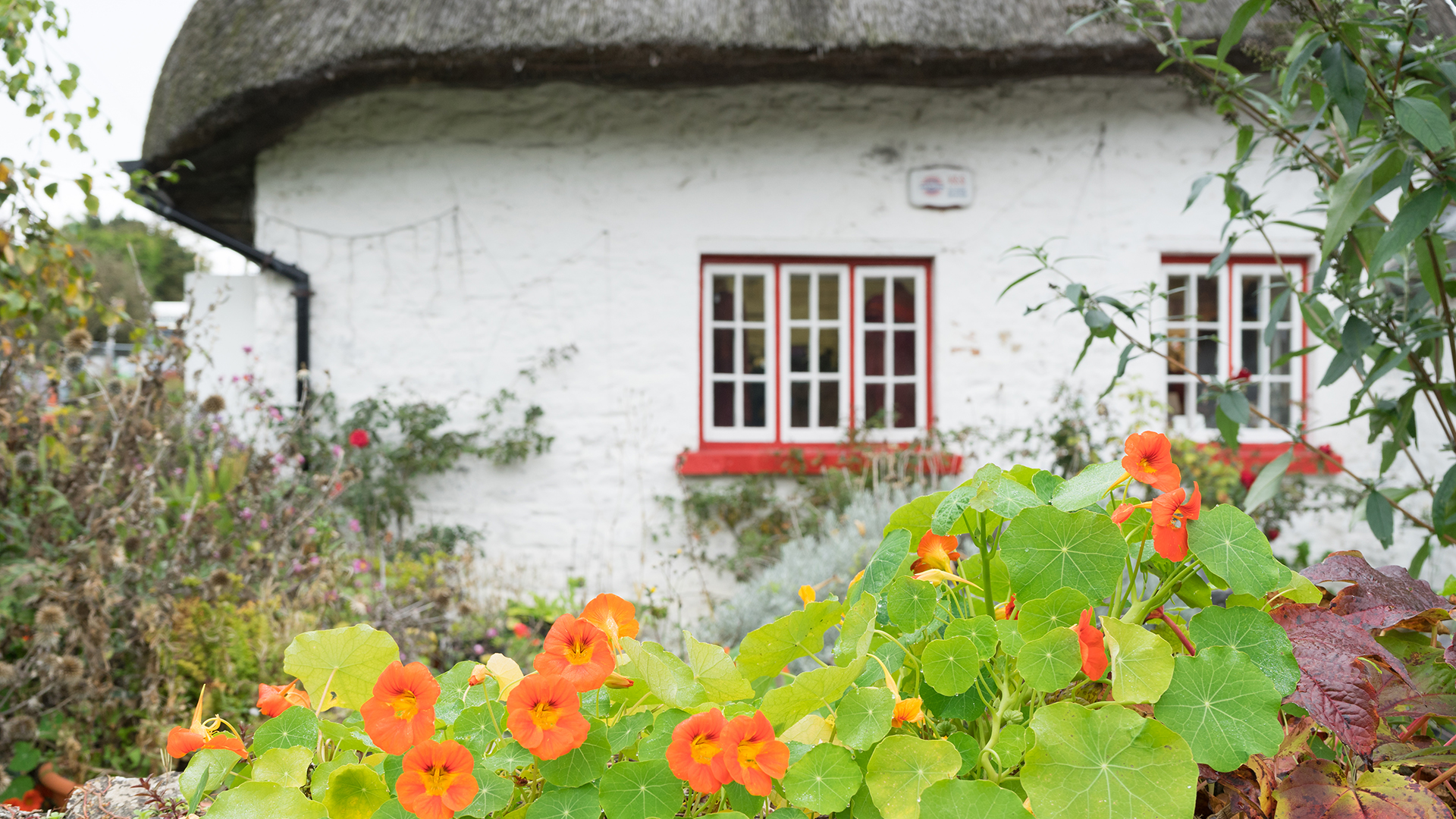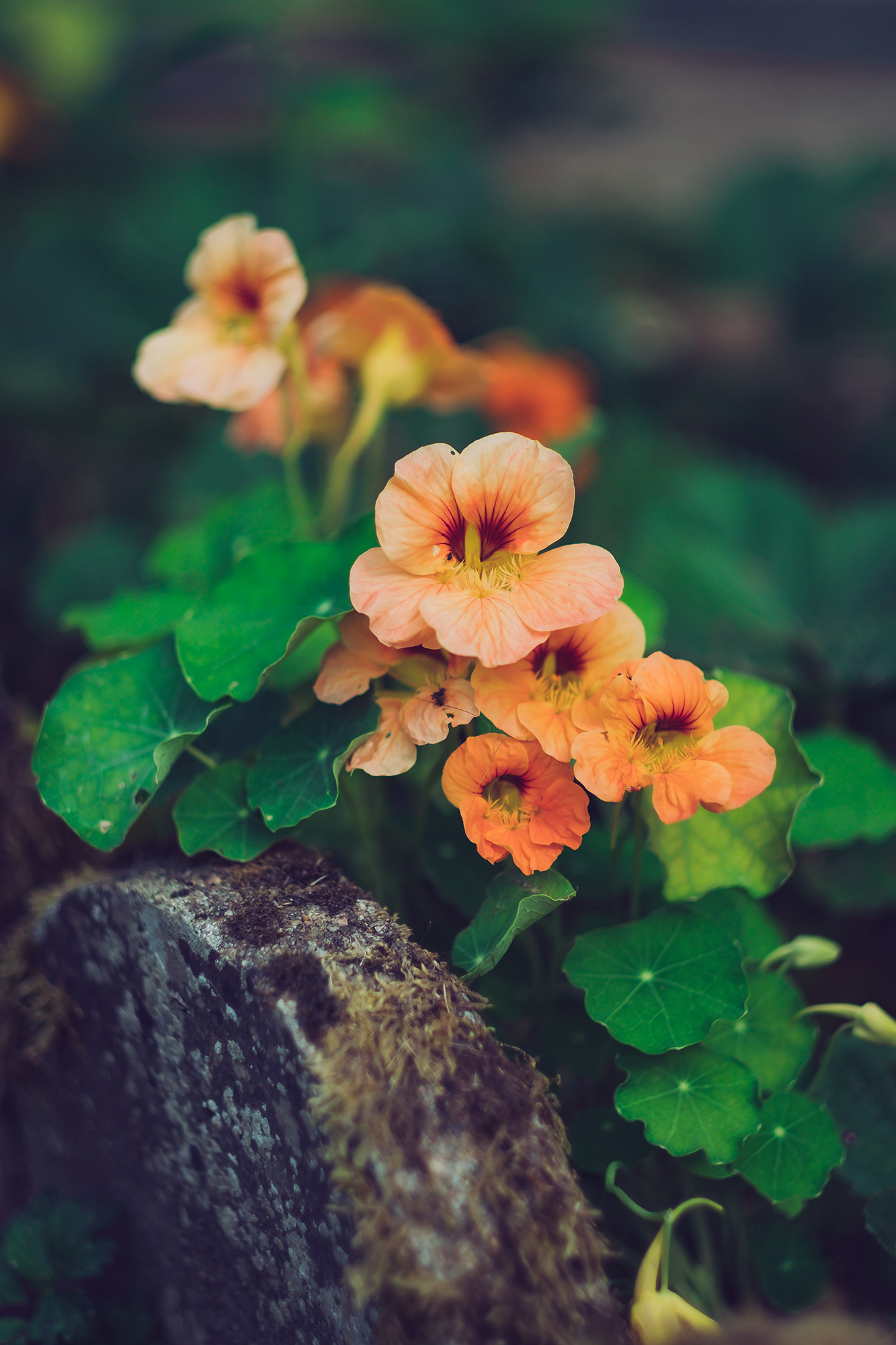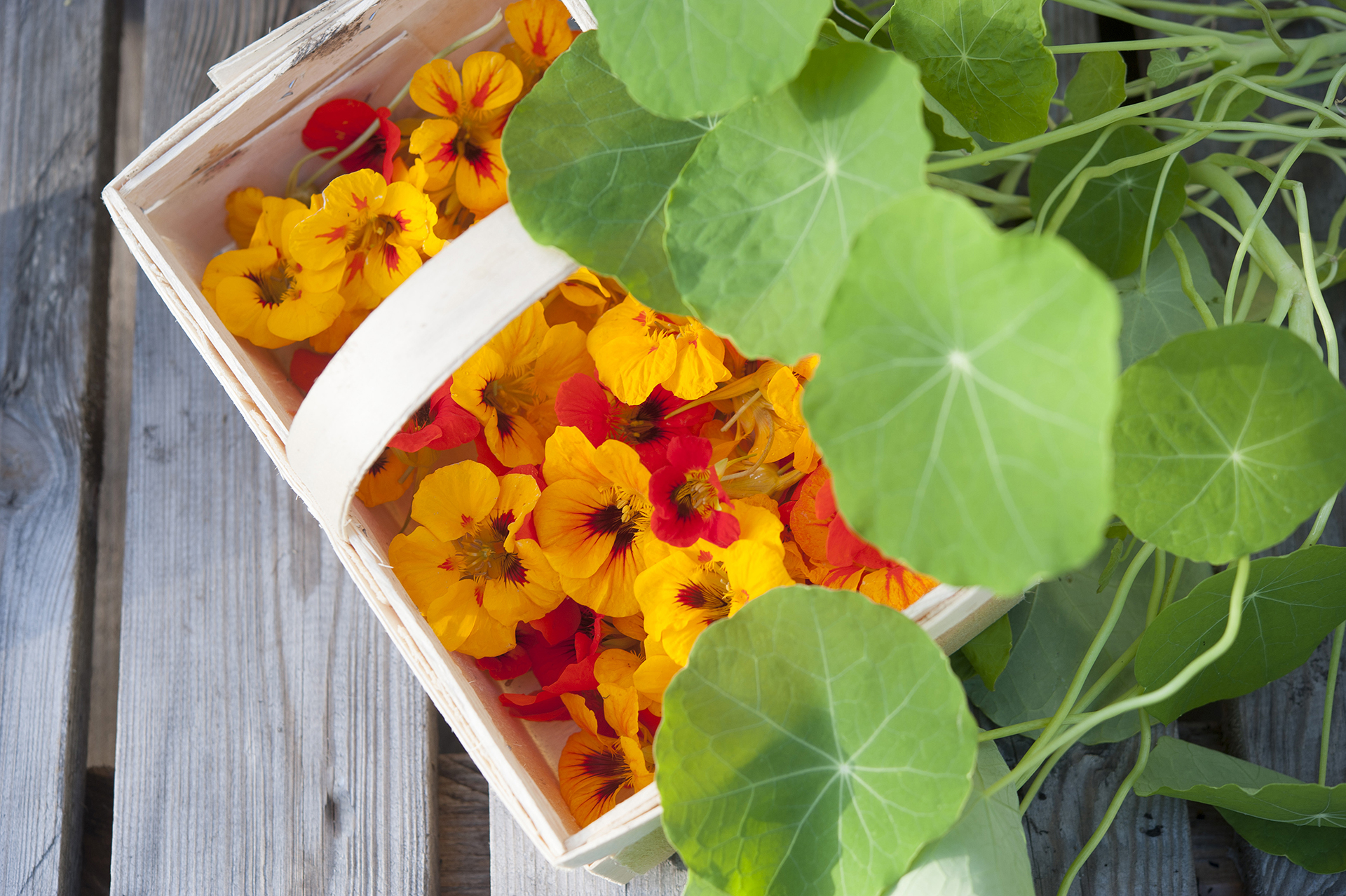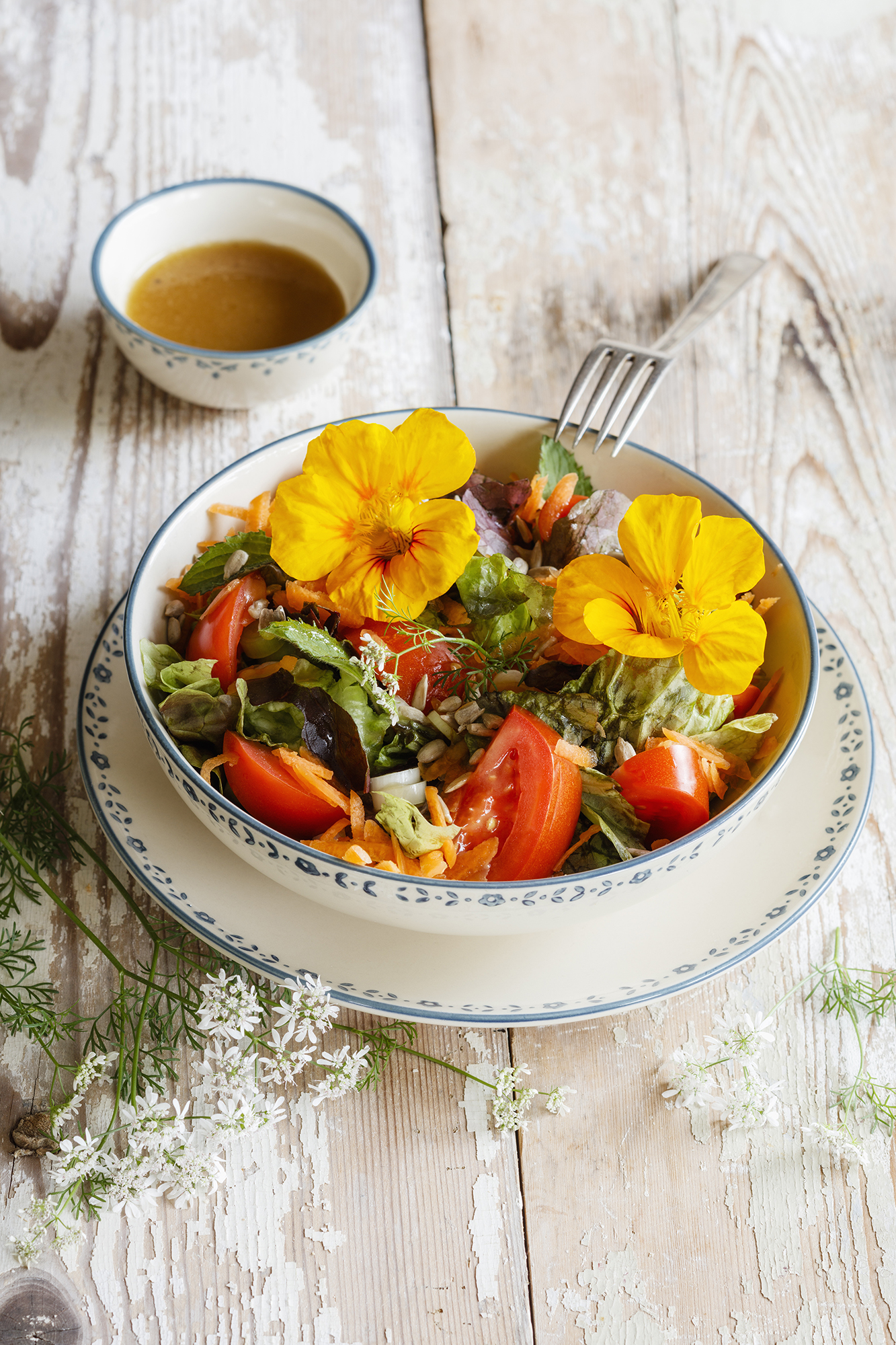How to grow nasturtium
Find out how to grow nasturtium to enjoy the colorful blooms in the garden, and as a tasty addition to salads


Once you know how to grow nasturtium, you can soon enjoy both the look and the taste of its blooms through summer and fall.
A versatile annual to grow, nasturtiums come in both bushy and climbing or trailing varieties, so are ideal for your flower bed ideas.
One of the joys of gardening is being able to eat what you grow, and the vividly colored flowers of nasturtium not only deliver in the looks department, making a beautiful addition to beds or containers, but the petals, seeds and leaves are edible, too.
'Nasturtium flowers are well known for their hot, peppery flavor in salads and work very well chopped up with capers and made into salsa verde of sorts,' explains gardening expert and writer Alys Folwer in her book Eat What You Grow.
The young leaves of nasturtium taste similar to watercress for sprinkling over salads, while the seedpods can be pickled in vinegar and used like capers.
If you're also looking for planting projects to get the children involved with then nasturtium is a great choice, as they're a great plant for beginners. Find out when to plant nasturtium seeds and bedding plants to enjoy their flame hues in summer and fall.
How to grow nasturtium

Nasturtiums can be sown and grown direct in garden beds and borders, in pots, trained to climb up vertical supports, or trailed across gravel or down steps or slopes.
Design expertise in your inbox – from inspiring decorating ideas and beautiful celebrity homes to practical gardening advice and shopping round-ups.
'Nasturtiums are easy-to-grow plants perfect for edging paths, planting in beds or adding to containers. Nasturtiums are one of the best mild-weather annual flowers for your garden, ' says Don McCulley, owner of Swallowtail Garden Seeds.
A popular plant for garden wildlife, the colorful flowers of nasturtium are a favorite of important pollinators such as bees and butterflies, while caterpillars love to munch on the leaves.
They are also a top companion planting choice for ground cover around the vegetable patch, as they lure aphids, black fly and other pest away from the valuable vegetable crops.
Where do nasturtiums grow best?

Nasturtiums grow best in free-draining, poor soil – meaning soil that is low in organic matter and nutrients. They can grow well in ground that is stony or gravelly.
'Folklore states that nasturtiums grow best in the floor sweepings, which is to say that the poorer the soil, the better the flowering as too rich conditions result in all leaf and no flowers,' advises Alys Fowler.
Do nasturtiums like sun or shade?

Nasturtiums are sun-loving flowers and you will get the best results if they have full sun, for at least 6 to 8 hours a day. They will grow in partial shade, although they won't bloom as profusely.
How to grow nasturtiums from seed

Although you can buy ready grown nasturtium plants in spring 'they are so easy to grow from seed you really should have a go. The seed can be sown directly in the ground or in pots first and then planted out,' says Vicki Cooke, conservation manager for Plant Heritage in an article for Richard Jackson Garden.
Seeds can be sown from mid-spring to mid-summer.
For the best results:
- Sow nasturtium seeds after all danger of frost has passed – soil temperature should ideally be between 55° and 65°F (12° and 18°C).
- Sow in a sunny spot in free-draining, poor soil - so no need to add fertilizer beforehand.
- 'Sow seeds directly in the garden 3/4 in. deep and 4-6 in. apart,' advises Don McCulley
- They are fast-growing and will germinate in 7 to 14 days.
- 'Thin seedlings to 8-12 in. apart for bush types, and 18-24 in. for trailing varieties,' advises Don McCulley.
- Water nasturtium plants regularly through the growing season, although take care not to over water them.
- They will flower from the summer through to fall.
'Nasturtium is grown very easily from seed,' explains gardening guru Monty Don in a video for Gardeners' World.
'I use nasturtiums a lot because they do give you that intensity of color, with a looseness of growth that can be trailing,' Monty adds.
Can nasturtiums be grown in pots?
'Nasturtiums grow very well in pots,' says Monty.
Bush nasturtiums are a better choice for planting in pots as they remain more compact, whereas trailing nasturtiums are ideal for window boxes or hanging baskets.
If planting them in containers, mix the compost with fine gravel or grit to both help drainage and reduce the level of nutrients, as they grow best in poor soil.
Sow one or two nasturtium seeds per pot so that they don't outgrow the container.
You can place your nasturtiums in a slightly shadier spot if growing them in pots as they will benefit from protection from over exposure and the drying effects of the sun.
Use container gardening ideas to add beautiful highlights to all areas of your garden. Nasturtium plants grown in containers should be watered to keep the compost evenly moist.
Do nasturtiums need to climb?

There are types of nasturtiums that like to climb or trail. These types – Tropaeolum majus – form long vines that will climb or sprawl, their stems twisting around canes, trellis or other plants, climbing to over 10 feet.
If growing the climbing type of nasturtium it is important to plan to provide supports for them.
How to maintain nasturtiums
Nasturtiums are easy to care for and don't need a lot of attention, but the following will help prolong or increase the blooms:
- Remove dead flower heads of nasturtiums to encourage more blooms to be produced for longer.
- Water plants regularly to keep the soil or compost moist.
- Nasturtiums growing in containers should be trimmed back from time to time over the growing season to encourage more growth – they are tolerant of being cut back.
- If your nasturtium plants are being overwhelmed by black fly 'find a clean spray bottle and mix a very dilute solution of washing up liquid (1 tsp to 2 liters) to wash them off,' advises Vicki Cooke.
Harvesting nasturtiums

The leaves and flowers of nasturtium can be harvested at any time, although the younger leaves will have a better flavor.
Snip off leaves and flowers with scissors to avoid damaging the plant and harvest seedpods before they mature and harden.
Hardened and matured seedpods can be saved for replanting the following spring. Collect fallen seeds, brush off the soil and dry them out fully before storing in a paper envelope in a cool, dark spot.
Rachel is senior content editor, and writes gardening content for homesandgardens.com, Homes & Gardens magazine, and its sister titles Period Living Magazine and Country Homes & Interiors. She has written for lifestyle magazines for many years, with a particular focus on gardening, historic houses and arts and crafts, but started out her journalism career in BBC radio, where she enjoyed reporting on and writing programme scripts for all manner of stories. Rachel then moved into regional lifestyle magazines, where the topics she wrote about, and people she interviewed, were as varied and eclectic as they were on radio. Always harboring a passion for homes and gardens, she jumped at the opportunity to work on The English Home and The English Garden magazines for a number of years, before joining the Period Living team.
